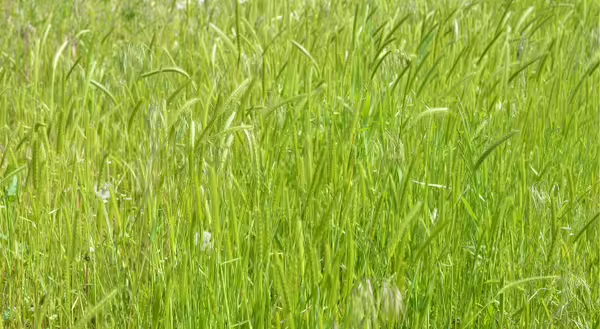
With warmer weather and spring rains, grasses have begun to grow. Looking around my yard, my lawn grasses are rapidly greening up, some even flowering between our routine mowing. Other grasses in my landscaping are just starting to put out new leafy growth. Why the difference in growth rates?
Cool-season vs. warm-season
Most grasses can be categorized as either cool-season or warm-season grasses. The terms refer to the timing of the majority of the growth of a given grass. Cool-season grasses begin growing in late winter to early spring, putting out new leaves. They will then flower and set seed in the spring to early summer, going dormant in the summer. Warm-season grasses, in contrast, will wait until late spring to early summer to push out new leafy growth, flower and set seed in summer to early fall, and then go dormant through the winter.
You may be wondering why grasses have adapted to grow during different seasons of the year? It all goes back to photosynthesis, and how plants turn carbon dioxide and water into sugar and oxygen. There are two main pathways that plants can use to capture carbon dioxide during photosynthesis, called C3 and C4. The number refers to the number of carbon atoms that are included in the first molecule created during photosynthesis – 3 or 4. Cool-season grasses undergo C3 photosynthesis, while warm-season grasses undergo C4. The differences in the way they fix carbon adapts them to different environmental conditions. Cool-season grasses are better able to tolerate frost, low light, and lower temperatures, while warm-season grasses have lower frost tolerance and higher light and temperature requirements. Warm-season grasses also require less water than cool-season grasses.
Taking a look at familiar grasses
Let’s go back to the example of the grasses in my yard. My lawn grass is (mostly) Kentucky Bluegrass, a cool-season grass. It has already greened up for the season, rapidly growing, flowering, and setting seed. The grasses in my landscaping include Little Bluestem, Switchgrass, and Side Oats Grama – these are all warm-season grasses. Now in late May, they have just started to green up and begin growing again – no inflorescences in sight yet. I'll wait for the hotter, drier summer weather before expecting to see them flowering.
Management implications
Seasonal variability of grass growth creates niches for other plants to grow when the grasses are dormant. When working in prairies and grasslands dominated by warm-season grasses, I noticed that many of the non-native or invasive grasses that we were working to control were cool-season grasses. They were able to establish and grow in the cool, rainy season prior to the summer when the dominant warm season prairie grasses established. Management techniques, such as prescribed fire, are conducted at different times of the year to either promote or knock back warm-season grasses. Understanding if the grasses you have are warm- or cool-season can have important management implications.
Paying attention to what time of year you see a grass at a given stage of growth can be a helpful clue to help you narrow down which grass you are looking at. Next time you are trying to identify a grass, categorize it first as cool-season or warm-season.